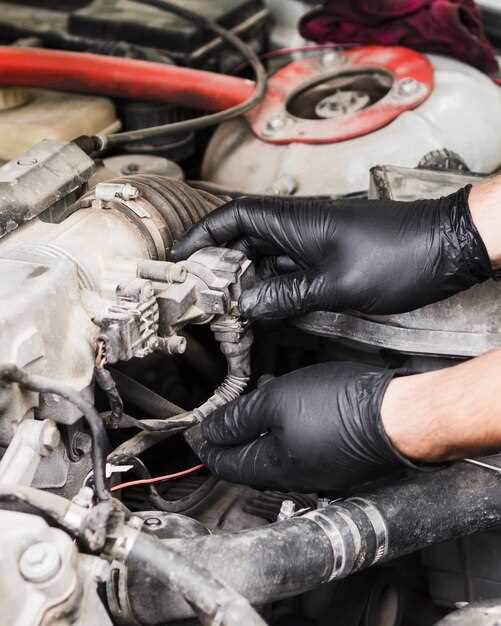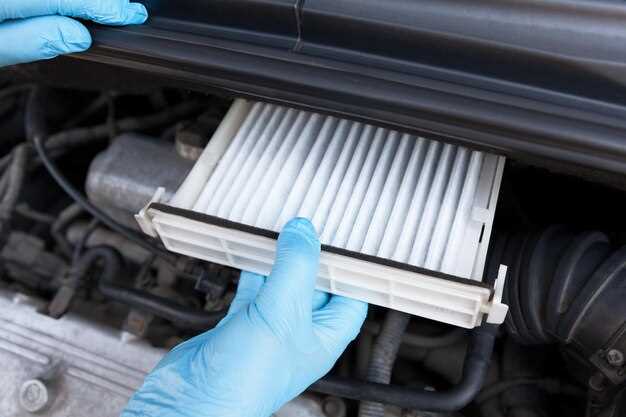

The diesel particulate filter, or DPF, is a critical component in modern diesel engine systems. Its primary function is to capture and store exhaust soot in order to reduce emissions and comply with environmental standards. Over time, however, the DPF can become clogged with soot and particulate matter, which can lead to significant performance issues and increased fuel consumption.
Cleaning your DPF is essential for maintaining the efficiency of your diesel engine. Ignoring this task can result in reduced engine performance, increased exhaust backpressure, and potential engine damage. Understanding how to properly clean and maintain this system is crucial for diesel vehicle owners and operators.
This guide will provide you with valuable insights into the methods and techniques for effectively cleaning your diesel particulate filter. Whether you’re considering manual cleaning or utilizing professional services, knowing the best practices will help you ensure the longevity and reliability of your vehicle’s emissions system.
How to Identify When Your DPF Needs Cleaning

Diesel Particulate Filters (DPF) play a crucial role in reducing emissions from diesel engines. Recognizing when your DPF requires cleaning is essential to maintain vehicle performance and compliance with environmental regulations. Here are some key indicators that signal a need for DPF cleaning.
First, monitor your vehicle’s dashboard for warning lights. A commonly seen indicator is the check engine light, which may illuminate if the DPF is becoming clogged. In some vehicles, a specific DPF warning light may activate to alert you directly to this condition.
Second, pay attention to changes in engine performance. Symptoms such as decreased acceleration, reduced power, or engine stalling can indicate a clogged DPF. When the filter becomes too full of soot and ash, exhaust gases cannot flow freely, leading to performance issues.
In addition, keep an eye on fuel consumption. If you notice a sudden increase in fuel usage, it might suggest that the engine is working harder to compensate for a restricted exhaust flow due to a blocked DPF.
Another sign is the presence of excessive black smoke from the exhaust. This excessive emissions indicate that the DPF is struggling to filter out particulates, thus requiring immediate cleaning or servicing to restore its function.
Lastly, regular maintenance schedules are critical. Follow manufacturer recommendations for DPF cleaning intervals based on driving conditions, as frequent short trips can lead to a higher buildup of soot.
Detecting these signs early can help prevent more significant engine damage and costly repairs, ensuring your vehicle remains efficient in controlling emissions.
Step-by-Step Process for Cleaning Your DPF
Cleaning your Diesel Particulate Filter (DPF) is essential for maintaining optimal engine performance and ensuring compliance with emission standards. Follow these steps for effective cleaning.
Step 1: Preparation – Begin by gathering the necessary tools and materials, including a DPF cleaning kit, safety gloves, goggles, and a vacuum cleaner. Ensure the vehicle is parked on a flat surface and the engine is cool before starting.
Step 2: Remove the DPF – Locate the DPF in your vehicle’s exhaust system. Carefully detach it from the exhaust pipes and sensor connections. Ensure all necessary gaskets and bolts are set aside for reinstallation.
Step 3: Initial Inspection – Examine the DPF for any physical damage or excessive clogging. Look for signs of soot buildup and other obstructions that may affect performance.
Step 4: Vacuuming – Using a vacuum cleaner, remove loose soot and debris from both the exterior and interior of the DPF. This will help to minimize the contaminants before chemical cleaning is performed.
Step 5: Chemical Cleaning – Apply the DPF cleaning solution according to the manufacturer’s instructions. Allow the solution to sit for the recommended time to break down the hardened soot deposits within the filter.
Step 6: Rinsing – After the chemical has worked, thoroughly rinse the DPF with clean water. Ensure that all cleaning substances and dislodged soot have been washed away. Allow the filter to dry completely before reinstallation.
Step 7: Reinstallation – Once dried, reattach the DPF to the exhaust system, ensuring all connections are secure. Replace any gaskets or bolts that may have been removed.
Step 8: Final Check – Start the engine and monitor for any error codes or warning lights. Conduct a road test to ensure the vehicle operates smoothly and emissions are within acceptable limits.
Following this step-by-step process will help maintain the efficiency of your DPF and prolong the life of your diesel engine while adhering to emission regulations.
Common Mistakes to Avoid When Maintaining Your DPF

Maintaining your Diesel Particulate Filter (DPF) is crucial for ensuring optimal performance of your diesel engine and minimizing emissions. However, several common mistakes can undermine these efforts. Here are key pitfalls to avoid:
1. Ignoring Warning Lights: Many drivers overlook warning indicators on their dashboard related to the DPF. These lights often signal that the filter is becoming blocked or requires immediate attention. Ignoring these warnings can lead to significant engine problems and increased emissions.
2. Neglecting Regular Maintenance: Regular maintenance is vital to keeping the DPF in good condition. Skipping scheduled services can lead to accumulated soot and ash, which can compromise the DPF system’s efficiency and functionality. Always adhere to the maintenance schedule recommended by your vehicle manufacturer.
3. Using Low-Quality Fuel: The quality of diesel fuel can greatly affect the performance of the DPF. Using low-quality or contaminated fuel can lead to excessive particulate buildup, negatively impacting the system and increasing emissions. Always choose high-quality fuel from trusted sources.
4. Incorrect Regeneration Practices: Regeneration is a process that helps clean the DPF by burning off accumulated soot. Many drivers fail to understand the correct methods for initiating regeneration, which can result in incomplete cleaning. Familiarize yourself with the specific regeneration protocols for your vehicle.
5. Avoiding Professional Inspections: While DIY maintenance can be beneficial, certain aspects of DPF care are best left to professionals. Regular inspections can help detect issues that may not be visible during routine checks. Professional technicians have the expertise to diagnose problems accurately and suggest appropriate solutions.
6. Overlooking Exhaust System Components: The DPF is part of a larger exhaust system, and issues with other components can affect its performance. Failing to address problems such as malfunctioning sensors, damaged pipes, or leaks can lead to increased emissions and reduced efficiency of the DPF.
7. Assuming All DPFs are the Same: Not all DPFs are created equal. Different vehicles and brands may require specialized care and maintenance practices. Always refer to your vehicle’s manual for specific guidelines related to the DPF system.
Avoiding these common mistakes will help maintain your DPF effectively, ensuring a cleaner combustion process and reduced emissions, while prolonging the life of your engine.






